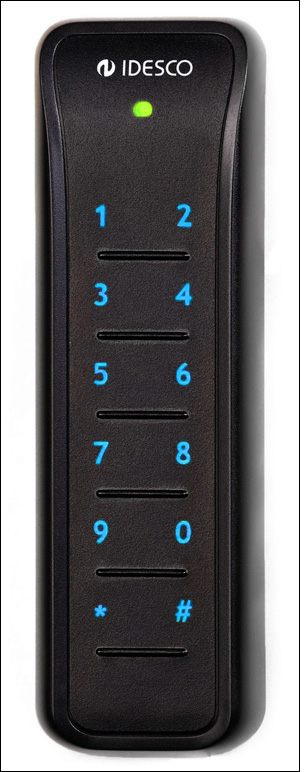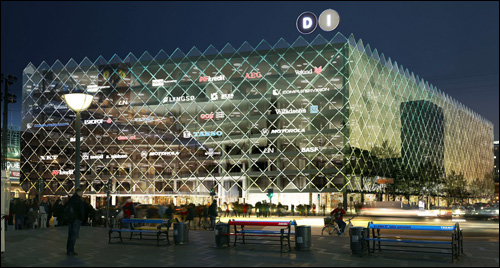When Danish Industries, a trade organization and employers’ association, expanded its headquarter in Copenhagen, it needed a new access-control system, as well as intrusion alarms and security video cameras. Rather than utilizing independent systems to control who enters the building, manage the video streaming of cameras and issue alerts to security guards if an intruder enters, the company opted to deploy an integrated solution comprising RFID readers installed at doorways, as well as a single software system that also manages camera-based data and alarms. The solution was provided by Schneider Electric, using Idesco high-frequency (HF) RFID interrogators designed for access-control applications.
While expanding its headquarters by adding several stories to its existing facility, Danish Industries stripped the old system out of the structure to update its functionality. The company required an access-control solution to manage 245 external and internal doors and 55 security cameras, as well as an alerting system for use in the event of an intrusion.
Schneider Electric developed the solution, consisting of its I/Net software housed on Danish Industries’ virtual servers. Schneider installed cameras, provided by its Pelco division, throughout the building, at egresses and in hallways, in order to provide video footage of what occurred within those public areas. The company also provided Idesco’s Access 8 CD 2.0 Slim Pin readers, installed at both exterior and interior doorways requiring secure access, as well as 13.56 MHz HF RFID cards carried by all parties authorized to access the building.
When an individual is assigned a 13.56 MHz card made with an NXP Semiconductors Mifare DESFire chip and complying with the ISO 14443-A standard, that card’s unique ID number is linked to the person’s name, title and access authorization in the I/Net software, according to Anders Aagaard, Schneider’s building business system leader.
Upon arrival at the office, an individual presents his card to the Idesco reader, which captures the card’s unique ID number, forwards that information via a wired connection to the software—which then determines whether that person is authorized to access the building—and triggers the release of the door’s locking mechanism. If the doorway to that individual’s office or department also requires access authorization, he then follows the process once more.
The I/Net software stores each transaction with a time and date stamp, and also stores video images from each location, such as an entryway or hallway. Therefore, if someone were, for instance, to report that his card was stolen and used by the thief to access the building, management could simply log onto the software, look up that individual’s card history, and find the time and location of that accessing event. The company could then request video imagery for that specific date and time, and thus confirm the identity of the person using the card.
In the event of an emergency, such as the arrival of a group of people intent on forcing their way into the building, the I/Net software can lock down all doors. If this occurs, the readers will no longer provide entrance to those with RFID cards. The system can also release all door locks if emergency evacuation becomes necessary.
In addition, the solution can receive data from glass-break detectors connected to windows via a wired connection, and that alert will then be sent to guards within the building. If any access-controlled door is forced open, or held open for too long, the system will issue an alert to authorized personnel, such as facility managers or guards.
Danish Industries will be able to utilize the I/Net software to configure rules for each card. For example, the company can set a card to expire on a particular day, or a card can be disabled or enabled if the status of a staff member or visitor changes.
What’s more, in order to improve security, the Idesco readers are programmed with an application that can require a security password linked to a particular user before granting access to that person. If the reader were presented with a card recognized as one authorized for the building, it would respond during business hours. During evenings or weekends, however, the system can be set to require someone with an authorized card to enter a password. The interrogators can operate at temperatures as low as -40 degrees Celsius (-40 degrees Fahrenheit), as well as if wet or covered with snow or ice.
According to Schneider Electric, the system is anticipated to be fully installed by early April 2013, once the building renovation is complete. Danish Industries has declined to comment for this story.



